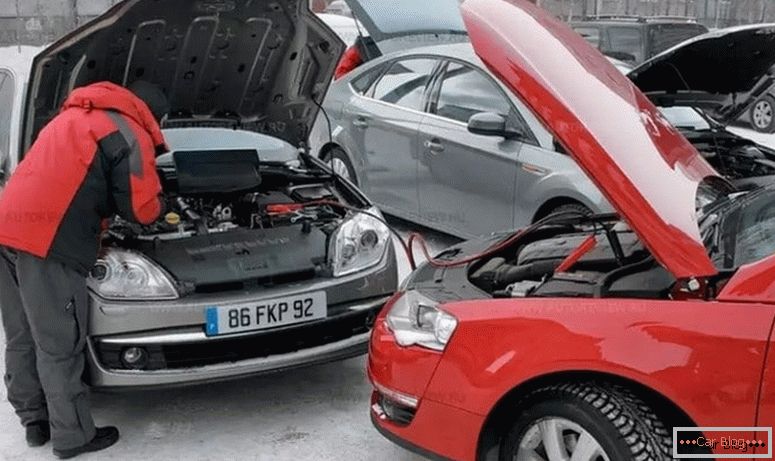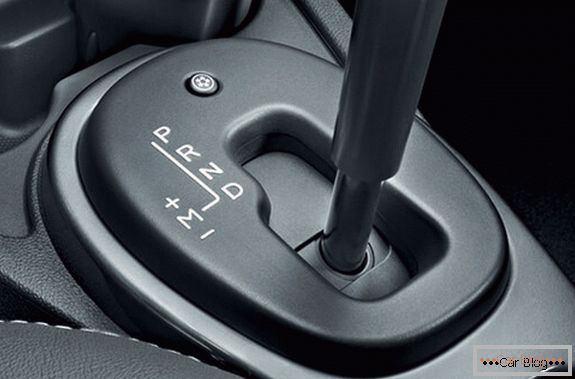The quality of the battery (battery) depends on the effective start of the engine and coherence in the electrical system. In serviced batteries, drivers are able to influence the parameters of this device not only by the level of charge, but also by changing the amount and density of the electrolyte.
Maintain a given level of electrolyte in the car battery is necessary in all seasons. The duration of its effective operation of the electrical device depends on it. When working with electrolyte in the battery, it is necessary to observe precautions.
Content
- 1 Operation of a serviced battery
- 2 Works with battery
- 3 Electrolytic Fluid Level Detection
- 4 How to adjust electrolyte volume
- 5 The final stage of working with the battery
- 6 Safety when working with electrolyte
Servicing Battery
Most modern cars are equipped with batteries with a maintenance-free design. This option is preferable to use for users, because it only needs to maintain the level of charge. But the negative side is the small life and lack of maintainability.
In serviced batteries, the owner affects many processes., while the ability to diagnose and eliminate the identified problems is higher than that of the non-maintenance design. This can be done even in the garage.
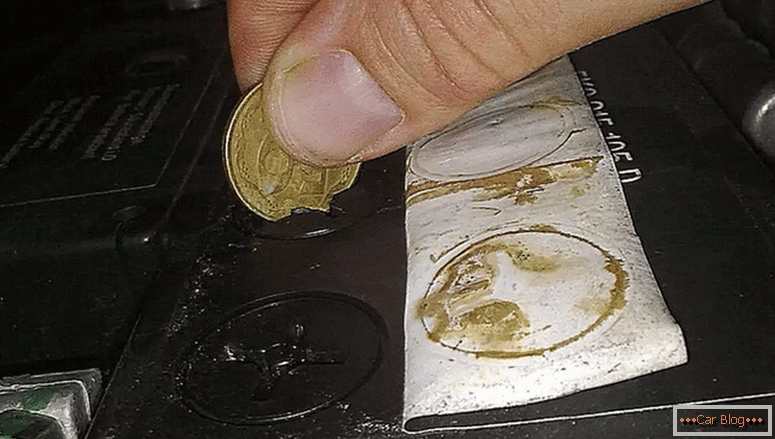
The visual difference between the two types of batteries lies in the fact that the serviced design is equipped with stoppers for access inside the cans with plates. Therefore, before checking the level of electrolyte in the battery, the owner alternately unscrews the covers from each of the containers.
Unscrew the thread carefully so as not to damage the plug. It is convenient to do this with a coin, not a screwdriver. The required fluid level can be indicated by the manufacturer on the battery case. It is compared with the actual parameter, and further actions are carried out on this basis.
Battery work
We throw away the contacts and get the battery from its place. Work with the serviced battery begins with cleaning possible contamination from the top, on which the terminals are located. Such an operation is mandatory in order to prevent debris from entering the cans. This method also reduces the effect of corrosive components on metal parts.
Removing pollution will help household cleanser with ammonia. It is sprayed on rags or napkins, and then wipe the battery. Areas with strong pollution should not be cleaned with soda, as it contributes to the acceleration of corrosive processes.
If the plugs are located separately, they are twisted counterclockwise. When part of the cans are closed with a common stopper, then for opening it is hooked with a flat screwdriver or trowel. After that access to the internal contents will open. On an unattended battery version will be the corresponding inscription. With him, such operations are strictly prohibited.
Under the opened traffic jams dirt accumulation is also possible. It is also desirable to get rid of it with the help of rags and cleaning products. It is necessary to make sure that after cleaning there are no wiping particles or the pile from the cloth on the inside of the cover, because they can get inside the battery.
See also: How to properly connect the radioElectrolytic Fluid Level Detection
In order to understand how much electrolyte should be in the battery initially, it is necessary to check the level in individual banks. All containers must have the same volume. A small error in height occurs when the liquid evaporates during a significant overheating.
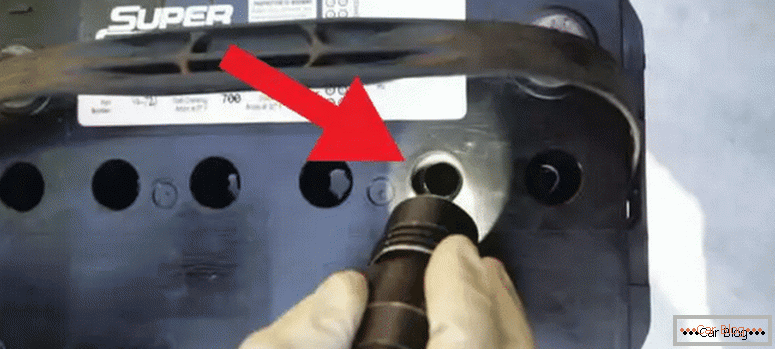
A significant difference in the volume of the contents of the cans may appear if the battery case has cracked. Further operation of such a device is not allowed. If there are no obvious deformations or damage to the hull, then you can pour the distillate into the problem jar and check the volume in it in a couple of weeks.
When the liquid level does not fully cover the plates, the battery's efficiency is significantly reduced. Open elements of platinum without electrolyte may become unusable in a few days. Lead plates can be exposed by about 10 mm, then it is enough to pour water. If the majority is uncovered, then most likely the battery will need to be changed.
You need to know that the absence of a large amount of electrolyte and the remaining plates can be evidence of excessive overcharging.
To solve this problem, you need to check the operation of the generator.
The optimal level is considered to be the liquid level, when there are about 10 mm above the plates, or it has dropped by 3-4 mm from the throat level. With this ratio, no refilling should be carried out. It is enough to twist the banks, and the next check is done in 2-3 months.
The maximum permissible level is when the liquid slightly reaches the plastic of the open hole. Structurally, grooves are made in the neck to help create a bulge due to the surface tension of the fluid. When the electrolyte comes into contact with the neck, a bulge is formed, if there is no touch, then the surface is even. This is done to avoid overflows. You can see such a bulge with a flashlight.
This technology is relevant for lead-acid batteries. Other types of non-automotive batteries should be serviced according to the recommendations of their manufacturers.
How to adjust electrolyte volume
When refilling the cans, the battery can be used exclusively distilled water. You can buy it in almost any auto shop. Do not allow the operation of open plates. Fill the liquid inside to the level of the neck, you need to charge the battery.
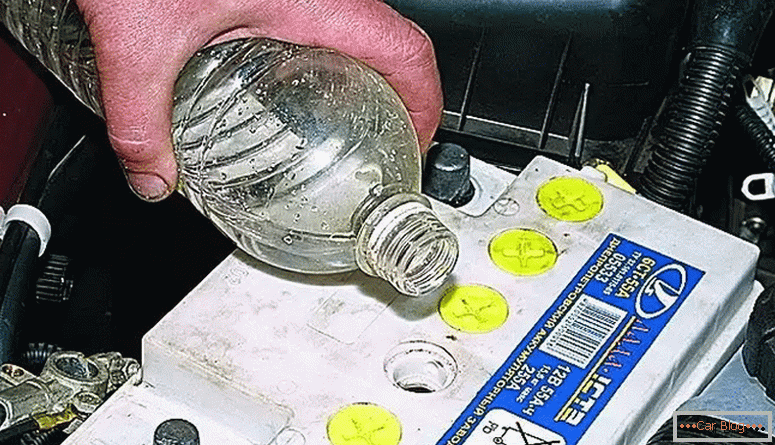
A motorist can use a watering can or a rubber syringe to properly fill cans without unnecessary spillage. At the same time it is necessary to prevent the ingress of pollution inside.
You need to know that the performance and battery life will decrease if you pour in non-distilled water.
This is due to various impurities in the liquid, for example, chlorine in the water supply or increased concentration of salts in the well. In a discharged battery it is necessary to add water only to cover the plates. Having received a charge, the level of electrolyte will increase, so it will take the remaining space.
See also: How to revive a car batteryThe final stage of working with the battery
At the final stage it is necessary to screw the plugs into place. Pre-clean their inner side. It is not desirable to allow overflow of liquid. Spilled drops should be removed with a cloth so as not to touch the electrolyte with your hands, because there is an acid in it.
Wipe drips should be movements from the holes. If the battery was under the hood at this time, then it is necessary to prevent drops on other parts and the engine. After completing the wiping, it is necessary to throw the rags into the garbage, and the container with water, in which the rag has been caressed, should be drained into the sewer system so as not to spill the acid particles onto the clothes and objects.
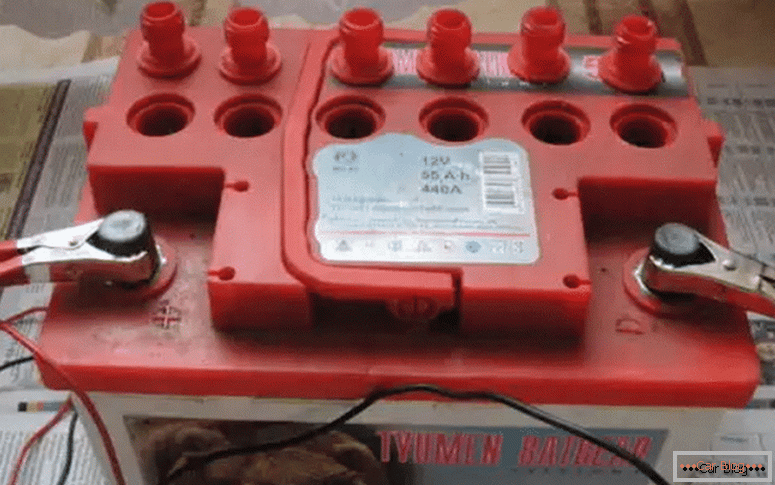
If the drops hit some surface, they should be wiped off with a cloth moistened with household detergent. Within several weeks it is necessary to control the overflowed capacity with electrolyte. When splashing appears, remove the drops in the same way.
A slight reduction in the mass fraction of acid in the electrolyte composition and the ambassadors of spilling out and adding distillate do not critically affect the performance of the battery. Therefore, it is not necessary to add acid in such a situation, because its excess in the mass fraction leads to intensive wear of the electric device, and the lack is not so critical for the performance and output characteristics of the battery.
Safety when working with electrolyte
The electrolyte contains sulfuric acid, which means that care must be taken when working with this liquid. First of all, it is necessary to protect the eyes from the ingress of vapors or drops into them. For this use safety building goggles. Ordinary optical glasses do not fit, as they have no side protection. Also, you can not use contact lenses, because they do not close the eyes completely.
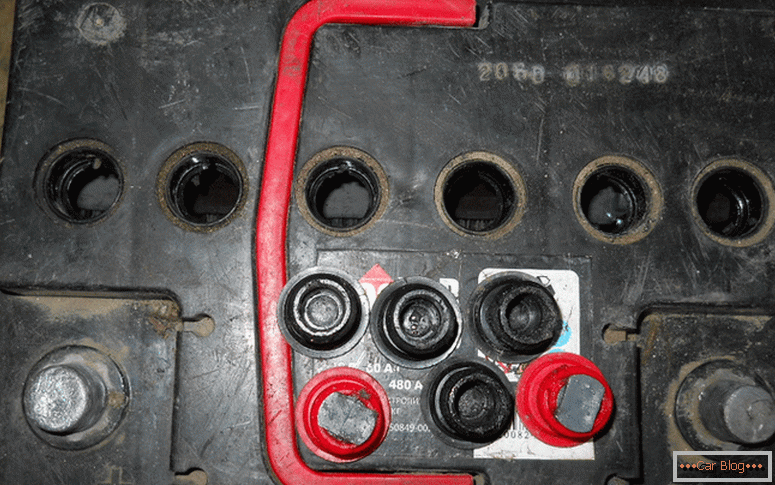
It is desirable to carry out work in rubber protective gloves. One of the effective protection have neoprene products. They are able to counteract destructive fluid for up to an hour. Lower safety in latex and vinyl materials. The minimum level of protection for nitrile gloves, as they corrode almost immediately from the ingress of electrolyte droplets.
Clothing should be made of thick fabric. The sleeve must pick up a long one and fill it with a glove. The erosion of the tissue in contact with fluid may not occur immediately, but after a few hours.
The liquid that has entered the skin should be immediately washed off with running water. You can use soap. Redness from acid exposure may not appear immediately, as for a chemical burn, unlike a thermal burn, it takes some time for exposure.

